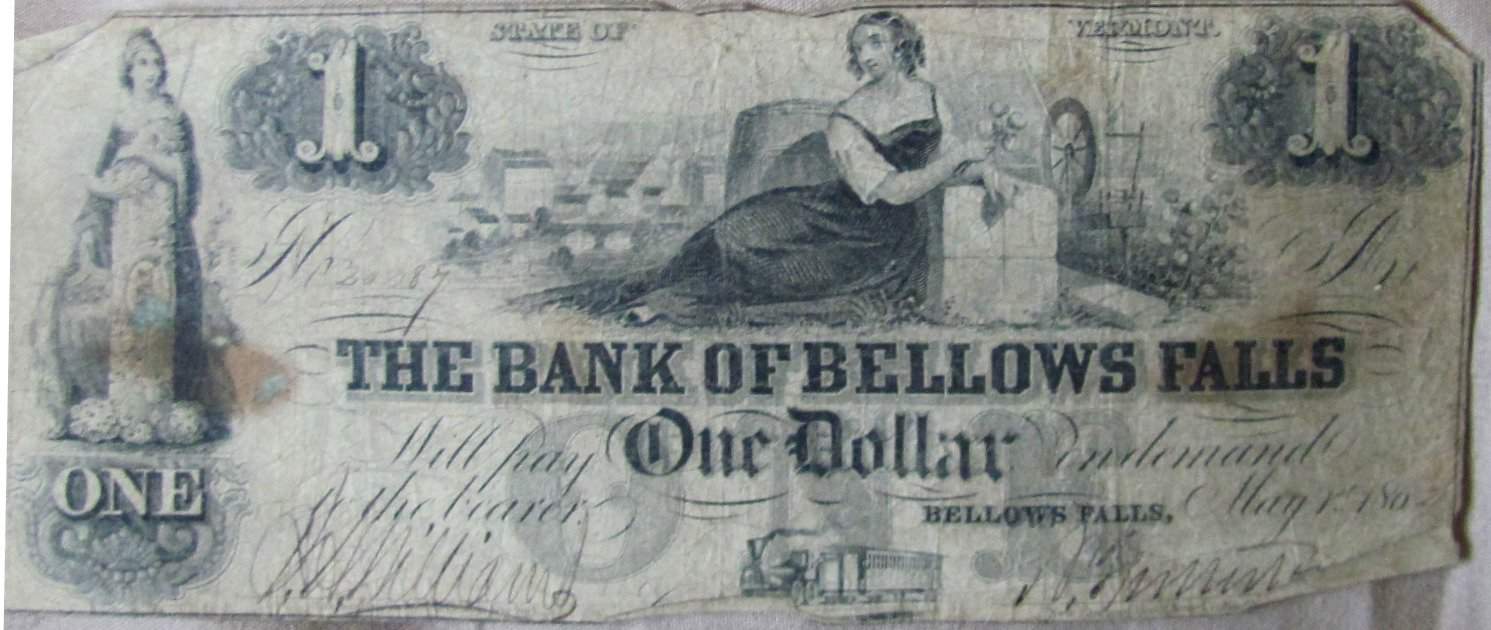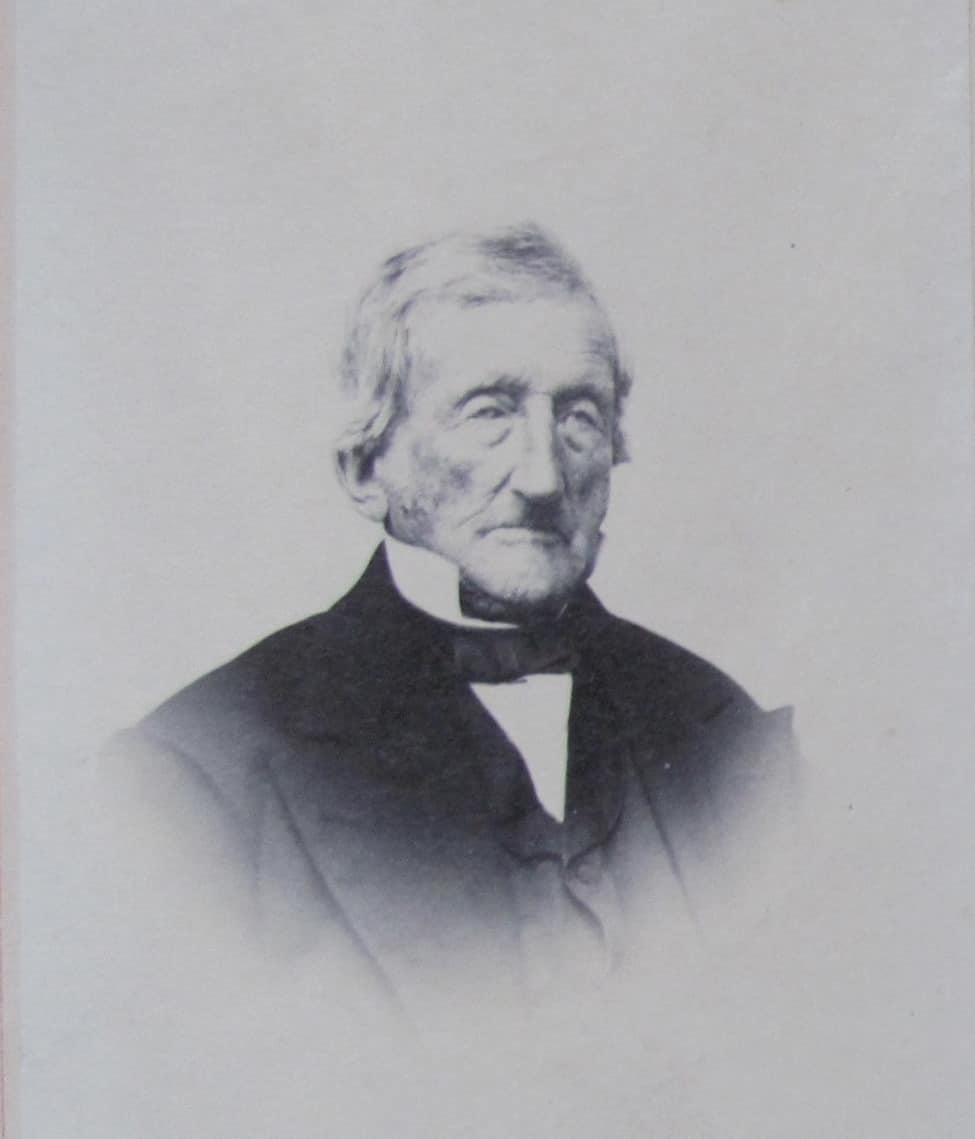
Last week I bought a few old coins and three old paper banknotes. Two of these banknotes date to the early 1860s; both are from The Bank of Bellows Falls. The third banknote is June 1830 from The Bellows Falls Bank.
The State of Vermont regulated these early banks, not the federal government. The following information is from Lyman Hayes, History of Rockingham, 1907. Hayes’ is a comprehensive book of 850 pages. If you don’t have a copy you can read more about these banks online, page 439 on.
Hayes mentions a bank in Bellows Falls prior to 1831, but he doesn’t mention the bank’s name. The third banknote I bought is that earlier bank. It is The Bellows Falls Bank. I don’t know when this bank was organized. Those records would exist at UVM Special Collections or the Vermont Historical Society. The Bellows Falls Historical Society may have some of this information. If I wanted to know more, I would start there.
“The Bank of Bellows Falls was incorporated Nov. 9, 1831, by special act of the legislature, with a capital stock of $100,000. The incorporators were Mark Richards and John Smith of Westminster, William Henry of Chester, and Daniel Kellogg, Henry F. Green, S.W. Goodridge, James I. Cutler, and Alexander S. Campbell of the town of Rockingham. The first meeting of the incorporators was held Feb. 2, 1832, at the old Mansion House, which stood on the Square south of the present bank building.

The following board of directors were elected: Daniel Kellogg as first president, Nathaniel Fullerton, James I Cutler, Nathan Wheeler, Samuel Porter, John Smith, and Otis Adams. These organized by electing Daniel Kellogg as the first president, and William Henry, cashier.
These two officers were authorized at the same meeting to purchase the lot upon the west side of the Square, now covered by the south end of the opera house building. Upon this lot, within a few months, was erected the small, plain, one-story brick building which served as the only banking house of Bellows Falls until 1875. The business was commenced in a small room in the second story of the Mammoth Block, immediately over what is now the store of the Howard Hardware company, and was continued there for a few months until the new building was ready for occupancy. This small building was occupied by the Bank of Bellows Falls during the remainder of the existence of that institution. In 1841, the discounts of the bank amounted to $130,134.50, only four banks in Vermont at that time doing a larger business.
Daniel Kellogg remained president until January 1837, when he was succeeded by Nathaniel Fullerton of Chester. William Henry, the first cashier, occupied the position until March 9, 1847, his resignation being occasioned by his election to Congress. He was succeeded by James H. Williams (1st). Mr. Fullerton was president and Mr. Williams cashier until the institution was merged into the National Bank of Bellows Falls, June 12, 1865.
By the terms of the new national banking act, the National Bank of Bellows, described above, was organized from the old Bank of Bellows Falls, described above, on June 12, 1865.
In accordance with the statutes providing for the retirement of the circulation of the bills of old state banks, the directors of the National Bank, on Jan. 8, 1867, had a memorable bonfire in which they destroyed $144,000 of the bills of the former institution…”

Above you read the names of presidents and cashiers. These banknotes were signed by both the president and cashier. The signatures on my notes are Kellogg, Williams, and Henry, as they should be.
My banknotes escaped the $144,000 bonfire. How many others exist, I do not know. These notes are well circulated and quite soiled from almost 200 years of handling. I am happy to have them.
The paper is a very thin, flimsy, tissue type paper. Of interest, as I have seen many times before, notes of this period are only printed on one side, the reverse is blank.
Banks received these notes directly from the State in denominations of: $1, $2, $3, and $5. Other denominations exist. I know of an uncut sheet of notes from the Jamaica Bank. Nathaniel Fullerton built the house Jerry Stewart lives in today.
This weeks old saying: A reader’s father used to say this after he’d been in the presence of an overly talkative woman; “That woman has her tongue hung in the middle and it wags at both ends.”